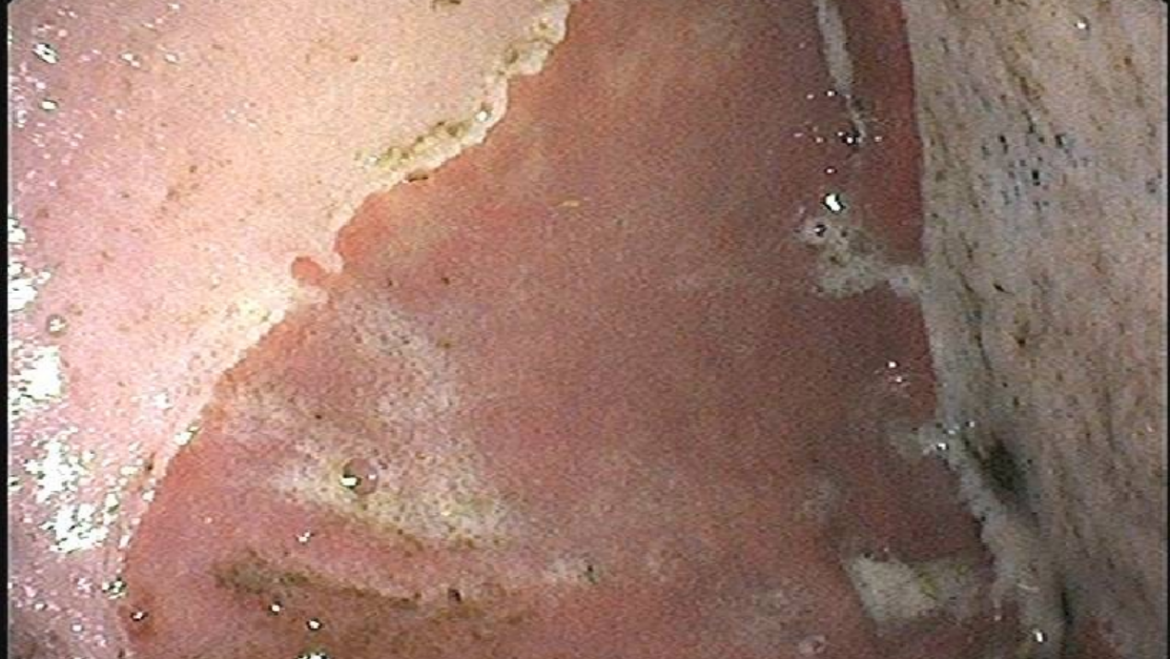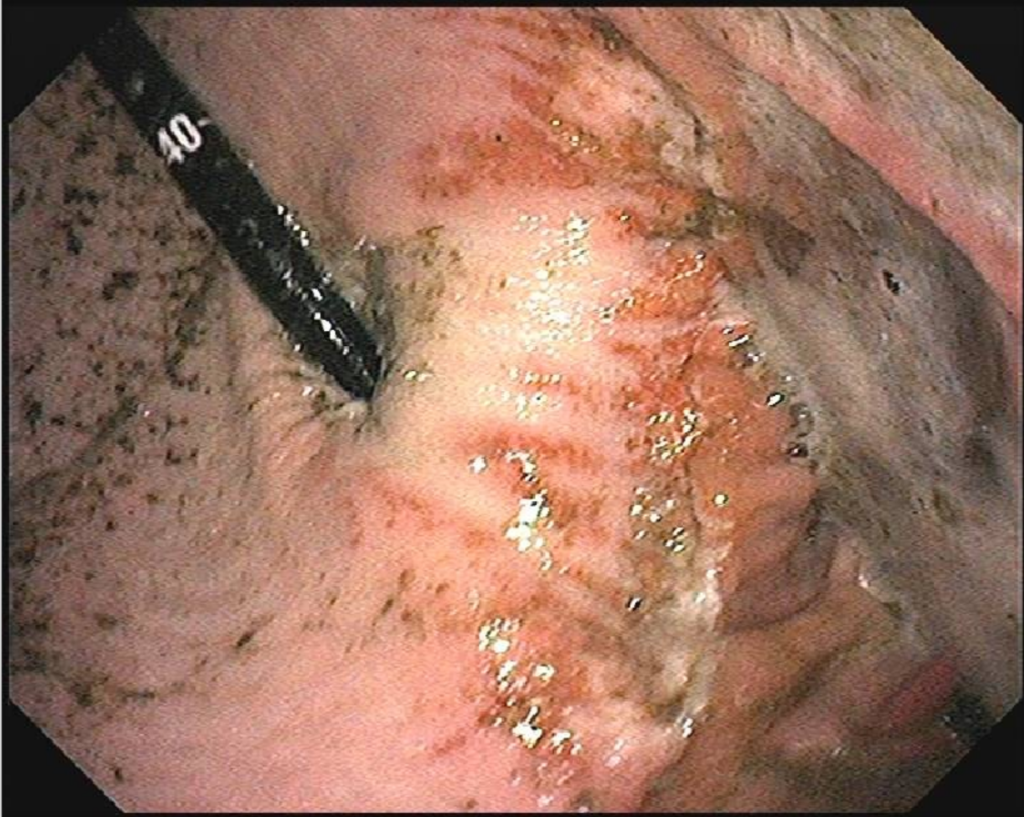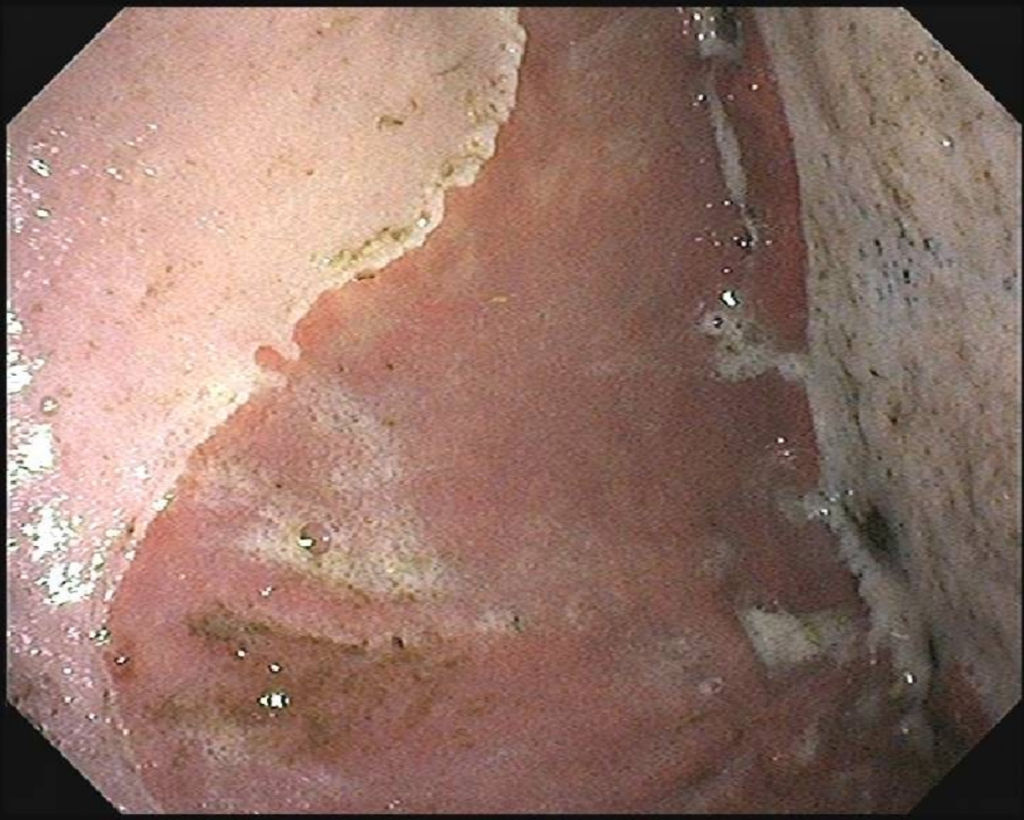October Case of the Month: “Reginald” – A Stressful Stomach
Reggie is a 10-year old warmblood gelding used for dressage and pleasure riding. This past summer, Reggie’s workload increased, and his owner and leasor starting taking him off the property to go to lessons and to horseshows. Reggie tries very hard for his people, but he’s also a bit of a nervous fellow, and the stress of this new, more challenging lifestyle started to catch up with him over the summer. Reggie became very reactive under saddle, he was upset while being tacked up, and started kicking out at leg pressure with a reluctance to move forward. Reggie’s owner very astutely became worried that Reggie may have developed gastric ulcers from his increased stress levels, and scheduled a gastroscopy to evaluate the health of his stomach.
Equine Gastric Ulcer Syndrome (EGUS) is divided into two sub-types: Glandular (EGGUS) and Squamous (ESGUS), depending on where in the stomach ulcers occur.
ESGUS is characterized by ulceration and/or inflammation of the squamous epithelium of the stomach; this tissue is at the upper portion of the stomach and is effectively an extension of the esophagus into the stomach as the tissue does not produce any digestive enzymes or gastric acid and it does not have any significant protections against the effects of the acidic gastric juices. It is prone to ulceration as acid splashes up on to it as the horse exercises.
EGGUS is the ulceration and/or inflammation of the glandular epithelium of the lower portion of the stomach; this tissue is the “true stomach” as it produces the digestive enzymes and releases hydrochloric acid to start the process of digesting the meal. This tissue also produces buffers and a thick mucous layer to protect itself from the effects of the potentially damaging gastric fluids. Ulcers in this region are slightly less common, and can be much more challenging to treat than those in the squamous portion of the stomach.
To prepare for his gastroscopy, Reggie was fasted for 16 hours. This ensures that the endoscope, once passed through his nostril and along his esophagus into his stomach, can see more than just his breakfast and allows the veterinarian to evaluate all of the lining of his stomach for signs of EGUS. Reggie was diagnosed with fairly significant squamous gastric ulcers. As you can see in the photos accompanying this case, Reggie had linear ulcerations along the lesser curvature of his stomach, as well as some focal ulcers at the greater curvature.
Reggie was treated with Gastrogard (omeprazole) at a full treatment dose for 28 days, and then had a repeat gastroscopy at the end of that treatment period to evaluate his response to the medication. At this gastroscopy, Reggie’s gastric ulcers were markedly improved, as you can see in the photos, however they were not completely resolved, he still had several small, pinpoint ulcers that had not completely healed. Luckily for Reggie’s owner, the company that makes Gastrogard – Boheringer Ingelheim – offers a Gastrogard guarantee program, where if a horse who has been treated for 28 consecutive days has any squamous ulcers remaining the company will give them another 28 days of treatment at no cost to ensure the ulcers are resolved completely. Dr. McDonald submitted Reggie’s case to the company and Reggie continued on treatment for another 28 days and has had resolution of his symptoms with the extra medication. Now Reggie will be maintained with a preventative product (Pro-Nutrin), and will be given the preventative dose of Gastrogard (1/4 tube daily) when he goes to horse shows next season in an effort to prevent his ulcers from returning once again.
- Reggie’s follow up gastroscope – ulcers healed
Click here to view the Gastrogard Guarantee



